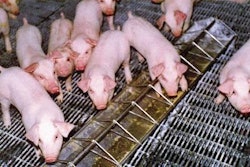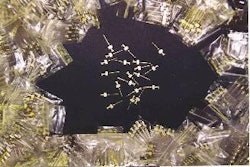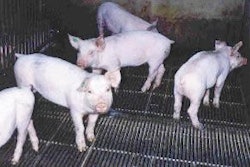A hand-held terminal in combination with an electronic transponder reader is the image of pig identification for recording purposes at the start of the twenty-first century. We have certainly come a long way from the days of writing a few figures on a scrap of paper or the back of a cigarette packet, comments the head of a software supply company. But the transformation is not over yet. Our methods for identifying pigs and registering their information will undergo a further evolution in the foreseeable future.
Speaking to an industrial business magazine about electronics in agriculture, Hans Jubbega of Dutch company Farm Software commented how computer management systems had made their mark in pig production. They give the producer essential information such as on the financial situation of the enterprise and show where improvements might be achieved, he said, besides registering the detail of physical performance. Targets could be set for output that allowed provision to be made for feed and other essential inputs.
The development of today's pig management software can be traced back 25 years or more. But the big step came about 20 years ago when the first Windows-based programming arrived with its capacity for multiple applications.
Since the software world is in constant motion, Mr Jubbega declared, there is more to come. "Smart client applications will be the future. These are applications that focus on working both on-line and on a desktop computer, allowing the system to update itself continuously. New data can be stored on-line instead of on the producer's PC. Saving the data on a large storage computer at the software company offers optimal virus protection through a local firewall.
"In fact, on-line management tools are already gaining ground rapidly," he continued. "The use of on-line registration opens up a wide range of opportunities that do not stop at the level of individual pig producers. Complete industry chains are able to enter the collective system and access the latest data on everything from semen collection through to deliveries of pigs to the slaughterhouse, with a single click of the mouse.
"Real-time industry information and prices therefore are available to pig producers at any time, as are up-to-date benchmark options and automatic updates. At the same time, feedmills can discover how much feed is needed and the abattoirs know exactly when to expect their next deliveries of pigs. Combine all this with radio frequency identification (RFID) and you have a complete chain of information for traceability."
















